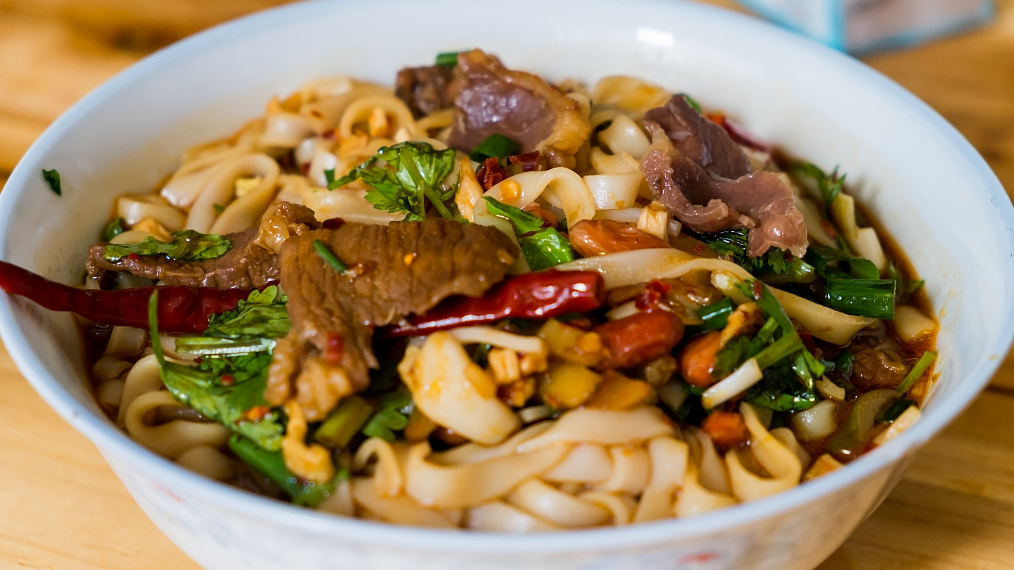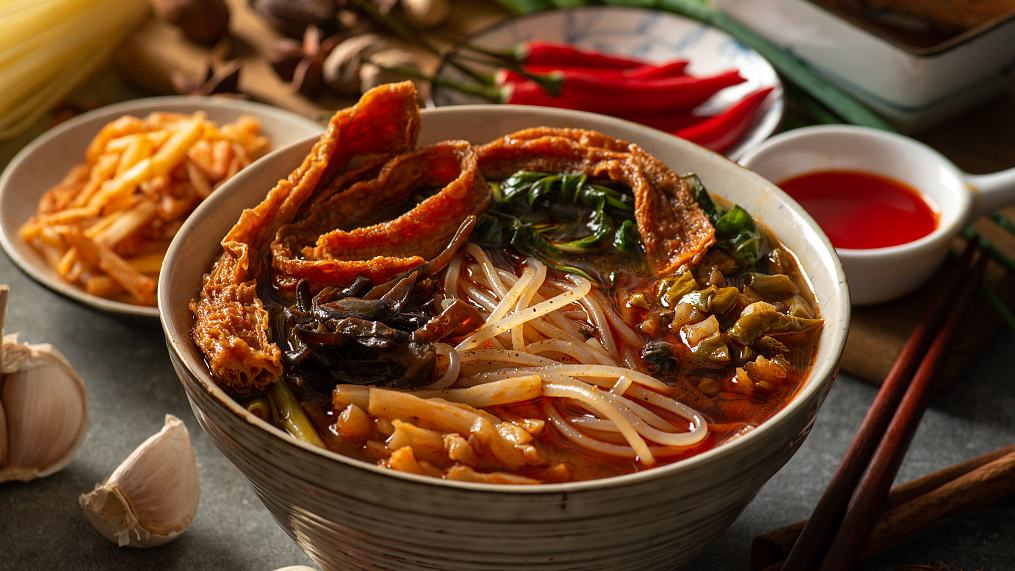
From the People's Daily App.
This is Story in the Story.
After finishing his morning wash, Yang Fan, a local resident in Changsha, capital of central China's Hunan Province, darted toward a rice noodle restaurant just reopened.
"I've never been so long between bowls of rice noodles in my 30 years of life," he said.
Yang, who used to frequent the restaurant, had suppressed his appetite for his favorite snack for a month since the province launched a top-level response to the major public health emergency on Jan. 23 due to the outbreak of novel coronavirus disease (COVID-19), suspending all catering businesses in Changsha.
It was the same day that Wuhan, the epicenter of the epidemic in neighboring Hubei Province, locked down all public transport and outbound channels in the city.
Yang missed the distinct, well-rounded flavor, as well as the smooth, tender and soft texture he had yearned for days and nights.
Today’s Story in the Story looks at the growing demand for ready-to-eat food in China and how businesses are launching more categories to cater to customers' particular tastes.

(Photo: CGTN)
For Changsha residents, a typical morning starts with breakfast rice noodles, often served in stewed bone soup, with toppings like diced pickled string beans stir-fried with minced pork and chili. Yet they seldom cook on their own.
The habit feeds over 6,000 rice noodle houses all around the city, nurturing a unique breakfast culture of "Hunan slurp," or the word suofen in the local dialect, which describes the action of eating rice noodles.
In ordinary times, the restaurant can accommodate 400 customers and sell 5,000 bowls of rice noodles a day, owner Yi Jun said.
He had spent hours driving along empty streets every day since the Spring Festival, just looking for any restaurants that were still open.
"If anyone reopens his restaurant, then I want to resume work too, bringing some vitality to the city," Yi said, waiting for the day that the epidemic would be contained.
Yi reopened his restaurant on Feb. 17 when he bowed to customers at the entrance in the morning with two of his employees in charge of taking body temperatures and registering the name and cell phone number of every customer.
The restaurant layout was altered. Big tables were replaced by small ones, with at least two meters between each one, holding only up to 50 people at a time. The opening hours have also been cut to 14 hours from 24 hours a day.
Yang sat down and ordered a bowl of rice noodles with shredded pork and a fried egg -- his favorite breakfast combo. Although served in a disposable box instead of a bowl, the taste was familiar to him.
"I feel refreshed slurping noodles once again after so many days staying at home," Yang said.

(Photo: CGTN)
The restaurant sold some 5,000 bowls of rice noodles in the first three days after reopening, just equivalent to the sales volume of one day in the past. But Yi remained gratified.
At the same time, these days it seems that younger Chinese are cooking less and less.
According to a report by consulting company iResearch, 42.5 percent of people aged 20 to 29 cooked less than four times last year. Unless they were having get-togethers with friends, their top choice for meals was ready-to-eat food from convenience stores close to their homes or companies.
Joshua Zhang, executive vice-president of Japanese convenience store chain Lawson (China) Holdings, said that at its outlets sales of ready-to-eat breakfast, afternoon tea and midnight snacks have seen the fastest growth. For example, its breakfast sales have realized double-digit growth annually for the past four years.
"But a more important reason is that the food offered in convenience stores is more diversified and the taste and quality is better these days. Ready-to-eat food reflects Chinese consumers' desire for freshness, health and a nice taste," he said.
Jason Yu, general manager of Kantar Worldpanel China, said ready-to-eat food has been an important contributor to convenience store sales and has seen a stronger gross margin than other products.
"This own-label food can also include highly differentiated products, which can make consumers feel more connected to the brand," he added.
(Produced by Nancy Yan Xu, Brian Lowe, Lance Crayon and Da Hang. Music by: bensound.com. Text from Xinhua and China Daily.)


